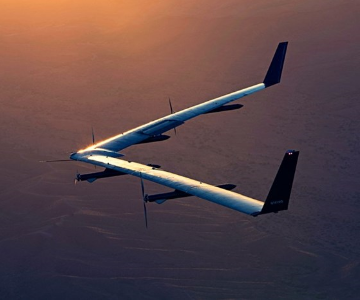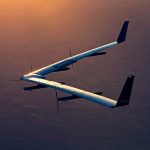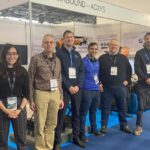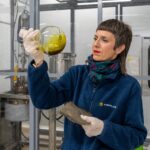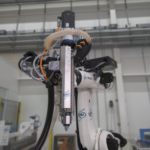One of the great promises of composites use in drones is as an enabler for persistent, long-duration systems that provide wide-area Wifi Internet access. Ideally, such drones would be solar-powered and able to serve land areas of many square miles with uninterrupted Internet access for weeks at a time. There are at least two programs pursuing this technology, and results so far are promising, if mixed.
One is the work of social media giant Facebook (Menlo Park, CA, US), and the other, a product of the Massachusetts Institute of Technology (MIT, Cambridge, MA, US). Each has built and flown prototypes and aims to achieve unprecedented UAV flight durations with radically new designs, which, by necessity, hope to maximize the advantages of advanced composites.
In development since 2014, Facebook’s Aquila (Fig. 1), an all-carbon-fiber composite, solar-powered, four-propeller drone, has been test flown twice. In 2016, it was aloft for 96 minutes below 305m, and this past year, it flew for about 106 minutes, reaching an altitude of 914.4m. The Aquila is intended for big things: Aquila’s stated target customer base is the several billion people around the world without reliable online access. Given the enormous geographical scale, the drone must be capable of very long, uninterrupted flight, and that, in turn, has profound consequences for Aquila’s flight performance and design parameters. Facebook must build and launch pilotless aircraft capable of continuous flight for months and at very high altitudes — 60,000-90,000 ft (18,290-27,430m).
The flight-tested version has a “wingspan wider than a Boeing 737,” which puts it in the range of 110 ft (±34m). Foregoing the extra weight and drag of conventional landing gear, the Aquila also is equipped with a Kevlar “landing pad” bonded to the bottom of the motor pods, one reason it only weighs about 1,000 lb (454 kg), with roughly half of that mass accounted for by batteries.
Meanwhile, a team of Massachusetts Institute of Technology (MIT) engineers has designed, built and tested a UAV with a 24 ft (7.32m) wingspan, fabricated entirely from composites reinforced with carbon fiber and Kevlar. The objective of the UAV development project, dubbed Jungle Hawk Owl and funded by the US Air Force (Gateways Branch, AFLCMC/HNAG, Hanscom Air Force Base, Bedford, MA, US). The goal is to build a drone capable of staying aloft for five or more days, in high and low geographical latitudes, in all seasons, at an altitude of approximately 4,572m. Such a drone would be designed to perform as a communications hub, providing temporary Internet/phone connections over a large area in the event of a wide-scale power or service outage


